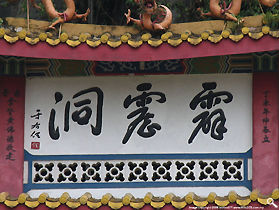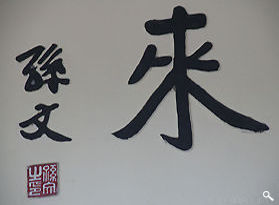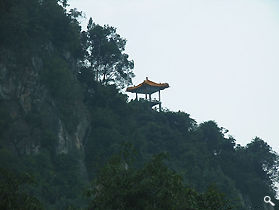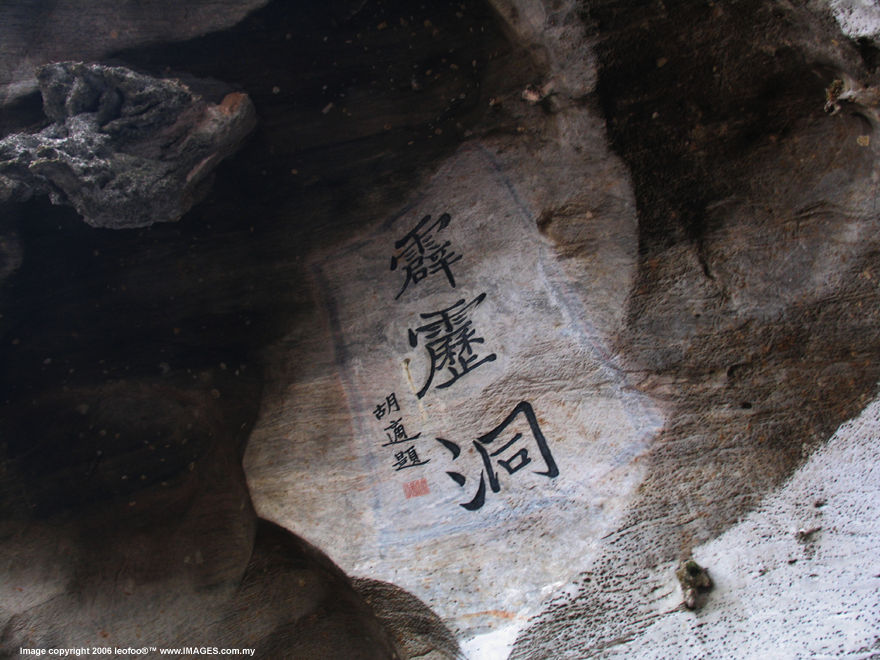Pek Lik Tong as the local Cantonese folks called it (Pi-Li
Dong in Mandarin and Perak Tong as some may referred it) is one favorite spot for
tour guide. Probably when you relates the cave temple with the like of the legends
such as Sun Yat Sun 1866-1925
(the Father of Modern China), influential intellectuals Hu shih (zhi)
1891-1962, Yu You Ren 1879-1964
and Chinese master artist, Zhang Da Qian
(0r Chang Ta-Chien 1899-1983) etc. what can you go wrong with bringing tourists in
here ? Even if the temple was not entirely very old, but I guess Perak Cave can be
easily ranked as one hot spot among all the cave temples found in Ipoh City due to
visits of these influential Chinese political and cultural figures.
 |
 |
<<<---
Some imprints of scripts by Sunyat Sun and Yu You Ren. There are probably more than
200 original artworks and calligraphy by visiting Chinese artists and scholars. Hence
It has a nickname as little Dunghuang of the South.
|
You may probably ask why were they here as Ipoh was relatively a remote mining town
during those days ? Simple and straight forward:- Fund Raising. Please don't
underestimate the financial strength of Ipoh folks. Historically until the commodity
price crashed occurred in the '70, Ipoh used to has a nick name as The town of
the many Millionaires due to its enormous reserves of tin ores. The Chinese who
invented the original form of open cast mining method in the Kinta Valley Tin ore
reserve Belt can even outperformed the tin ore output of the equivalent in British
designed Tin Dredging way of harvesting the minerals underground. During the height
of the Chinese revolution, Sun Yat Sun has to source financial help from overseas
Chinese and hence he made a visit here to ask for the rich local miners assistance
The visit probably was followed by sequential visits by other Chinese intellectuals
an high profile individuals which adds glamour into its formation.
 |
Like the Ling Xian Yan, it was learnt that Perak Cave
was also developed by individual (a couple, to be more exact). Mr. Chong Sen-yee,
ancestral from Guangdong Province, China first discovered this remote location and
hence applied to the authority for the cave to be converted as another cave temple
for worshippers. After spending life long of half a century in developing the cave
in stages, he spent his later years writing poets. The great character who had so
much of passion and dedication in this cave project passed away peacefully in 1980.
His Son, Mr. Y.C. Chong the heading the management of this wellknown Buddhist cave
temple now.
|
|




